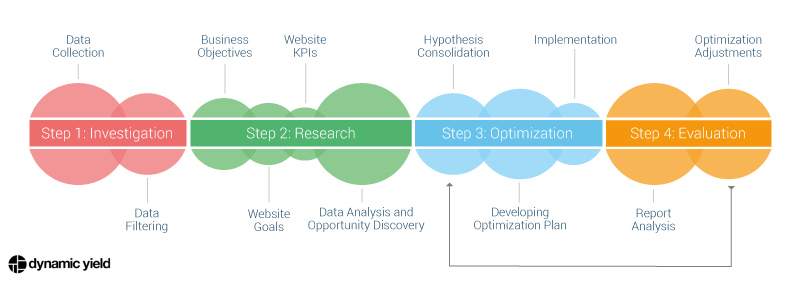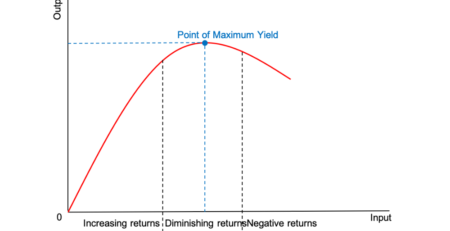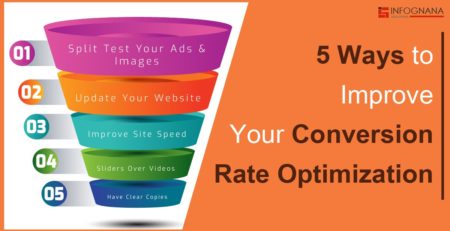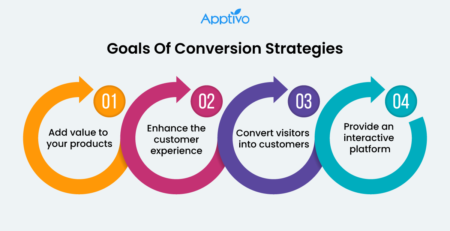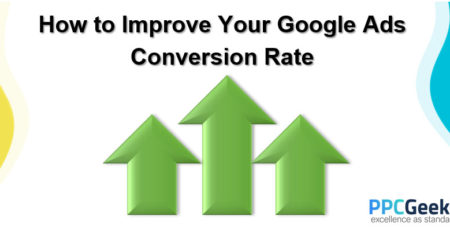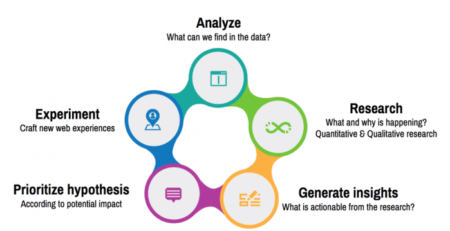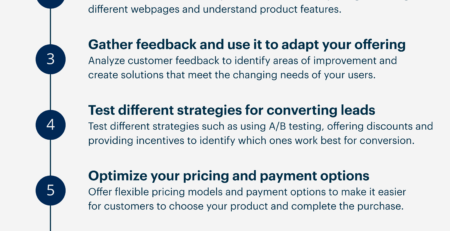Strategic Conversion Rate Optimization For Small Businesses In Austin
Welcome to the world of strategic conversion rate optimization for small businesses in Austin! If you’re a business owner looking to boost your online success, you’ve come to the right place.
In today’s digital age, having a strong online presence is crucial for small businesses in Austin. However, simply having a website isn’t enough. It’s all about converting your website visitors into paying customers, and that’s where strategic conversion rate optimization comes into play.
But what exactly is conversion rate optimization? Well, imagine your website as a store and your visitors as window shoppers. Conversion rate optimization is all about enticing those window shoppers to come inside and make a purchase. It’s about turning casual website visitors into loyal customers who can’t resist your products or services.
So, if you’re ready to take your small business in Austin to the next level by optimizing your conversion rates, buckle up and get ready for an exciting journey filled with strategic tips, tricks, and techniques that will help you boost your online success. Let’s dive in and transform your website into a conversion powerhouse!
Boost your small business in Austin with strategic conversion rate optimization. Increase your website’s effectiveness in turning visitors into customers using proven techniques. Implement compelling calls to action, optimize landing pages, and conduct A/B testing to discover what works best for your target audience. By analyzing data and making data-driven decisions, you can continuously improve your conversion rates and drive more revenue for your business.
Strategic Conversion Rate Optimization for Small Businesses in Austin
Welcome to this in-depth article about strategic conversion rate optimization for small businesses in Austin. In today’s competitive digital landscape, optimizing your website’s conversion rate has become essential for sustainable growth and success. In this article, we’ll explore various strategies, tips, and best practices to help small businesses in Austin improve their conversion rates and achieve their business goals. So, let’s dive in!
Understanding Conversion Rate Optimization
Conversion rate optimization (CRO) is the process of optimizing your website or landing page to increase the percentage of visitors who take a desired action, such as making a purchase, filling out a form, or subscribing to a newsletter. It involves analyzing user behavior, conducting experiments, and making data-driven changes to improve the overall user experience and encourage desired conversions. In the context of small businesses in Austin, successful CRO can lead to increased sales, improved customer engagement, and long-term business growth.
1. Conduct a Thorough Website Audit
The first step in your conversion rate optimization journey is to conduct a comprehensive website audit. This involves analyzing your website’s design, navigation, user interface, and overall user experience. Pay close attention to elements such as page load speed, mobile responsiveness, clarity of messaging, and ease of navigation. Identify areas where users may be experiencing obstacles or friction, and make necessary changes to address these issues. A well-optimized website is the foundation for effective CRO.
To conduct a website audit, you can use tools like Google Analytics to gather data on user behavior, traffic sources, and conversion rates. Heatmap tools like Crazy Egg or Hotjar can provide visual representations of where users are clicking, scrolling, and spending the most time on your website. This information will help you identify areas of improvement and make data-driven decisions for better conversion rates.
During the audit, pay attention to the clarity and relevance of your calls-to-action (CTAs). Ensure that they are prominently displayed, properly positioned, and clearly communicate the benefits of taking the desired action. A strong CTA can dramatically boost conversion rates by guiding users towards completing the desired action.
2. Implement A/B Testing
A/B testing is a crucial strategy in conversion rate optimization. It involves creating two or more variations of a webpage or an element on the page and testing them against each other to see which one performs better in terms of conversions. This ongoing experimentation helps you identify which elements, such as headlines, buttons, images, or layouts, have the most significant impact on conversion rates.
When conducting A/B tests, it’s important to test only one element at a time to accurately determine its impact on conversions. For example, you might want to test different headlines for the same landing page or different colors for your CTA buttons. By systematically testing different variations, you can incrementally refine and optimize your website for higher conversions.
There are several tools available to facilitate A/B testing, such as Google Optimize, Optimizely, or Visual Website Optimizer (VWO). These tools allow you to create and track experiments, measure conversions, and make data-driven decisions for better optimization.
3. Personalize the User Experience
Personalization plays a significant role in improving conversion rates. Tailoring the user experience based on individual preferences and behaviors can make visitors feel more engaged, connected, and motivated to take action. By leveraging data and user segmentation, you can create personalized content, offers, and recommendations that resonate with your audience and increase their likelihood of converting.
Start by gathering data about your visitors, such as their location, browsing history, past purchases, or interactions with your website. This information can help you create dynamic content, personalized landing pages, or targeted email campaigns that speak directly to your audience’s needs and interests. Tools like marketing automation platforms or customer relationship management (CRM) systems can assist in collecting and analyzing user data to drive personalized experiences and optimize conversion rates.
In addition to personalized content, consider utilizing social proof, such as customer testimonials, case studies, or user-generated reviews, to build trust and credibility with your audience. Social proof acts as a powerful motivator for conversions by showcasing the positive experiences of others and validating the value of your products or services.
Key Takeaways: Strategic Conversion Rate Optimization for Small Businesses in Austin
2. Implementing strategic conversion rate optimization techniques can lead to higher sales and revenue for small businesses in Austin.
3. Small businesses should focus on creating a user-friendly website and improving the overall user experience to increase conversion rates.
4. Utilizing data analysis and A/B testing can provide valuable insights into customer behavior and help optimize conversion rates.
5. Regularly monitoring and optimizing key conversion metrics can assist small businesses in Austin in achieving long-term growth and success.
Frequently Asked Questions
Welcome to our Frequently Asked Questions about strategic conversion rate optimization for small businesses in Austin. Here, we’ve compiled helpful answers to common queries that can help you improve your business’s conversion rates and achieve success in the Austin market.
1. How can conversion rate optimization benefit my small business in Austin?
Conversion rate optimization (CRO) can significantly impact your small business in Austin by increasing the percentage of website visitors who take the desired action, such as making a purchase or filling out a form. By optimizing your website’s design, user experience, and messaging, you can improve conversion rates and drive more revenue. CRO ensures that your website is not only attracting visitors but also converting them into valuable customers.
With the right CRO strategies, you can reduce bounce rates, increase engagement, and enhance overall user satisfaction. By focusing on CRO, you can maximize the value of each website visit and generate more leads or sales for your small business in Austin.
2. What are some effective strategies for strategic conversion rate optimization?
Effective strategies for strategic conversion rate optimization include conducting thorough website audits, analyzing user behavior data, and implementing A/B testing. Conducting a website audit helps identify areas for improvement, ensuring your site is user-friendly and optimized for conversions. Analyzing user behavior data allows you to understand how visitors navigate your website, enabling you to make data-driven decisions about design and content.
A/B testing is another powerful strategy. By comparing different versions of a webpage or CTA, you can determine what works best for your target audience. By continuously refining your website and testing different elements, you can optimize conversion rates over time and achieve better results for your small business in Austin.
3. How long does it take to see results from conversion rate optimization efforts?
The time it takes to see results from conversion rate optimization efforts can vary depending on several factors, such as the complexity of your website, the volume of traffic, and the changes implemented. While some businesses may start seeing improvements within a few weeks, it’s important to have realistic expectations as CRO is an ongoing process.
It typically takes several months to gather sufficient data and make informed decisions based on user behavior and A/B testing. Remember that CRO is a continuous effort to refine and optimize your website for conversions. With patience and consistent optimization, you can expect gradual improvements in your conversion rates over time.
4. Can conversion rate optimization help my small business stand out in the competitive Austin market?
Absolutely! Conversion rate optimization can give your small business a competitive edge in the bustling Austin market. By carefully analyzing your target audience’s preferences, behavior, and pain points, you can better address their needs and differentiate your business from competitors.
Effective CRO strategies can help you create a unique and compelling user experience, making your website more engaging and persuasive. By continuously optimizing and refining your website based on user feedback and data, you can stand out in the Austin market and attract more customers to your small business.
5. Is it necessary to hire a professional for strategic conversion rate optimization?
While it is not necessary to hire a professional for strategic conversion rate optimization, it can greatly benefit your small business in Austin. Professionals experienced in CRO can provide valuable insights, industry knowledge, and expertise to optimize your website effectively.
A CRO professional can conduct comprehensive website audits, analyze user behavior data, and recommend strategies tailored to your specific business objectives. They can also help you navigate challenges, anticipate trends, and stay updated with the latest CRO techniques. However, if you have the resources and time to invest, you can also learn and implement CRO strategies yourself, taking advantage of online resources and guides.
Summary
If you’re a small business in Austin, Texas, looking to improve your website’s performance, here are some key takeaways.
First, make sure your website is user-friendly and easy to navigate. Next, focus on optimizing your web pages for search engines by using relevant keywords. Additionally, consider adding a clear call-to-action to encourage visitors to take the desired action. Finally, don’t forget to test and measure the effectiveness of your changes to continually improve your website’s conversion rate.
Ultimately, by implementing these strategies, you can increase conversions and drive more business for your small business in Austin. Remember, it’s all about providing a great user experience and optimizing your website to attract and convert visitors into customers.

